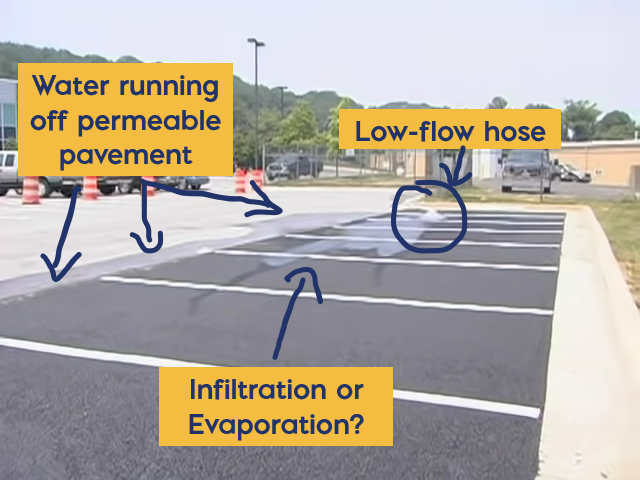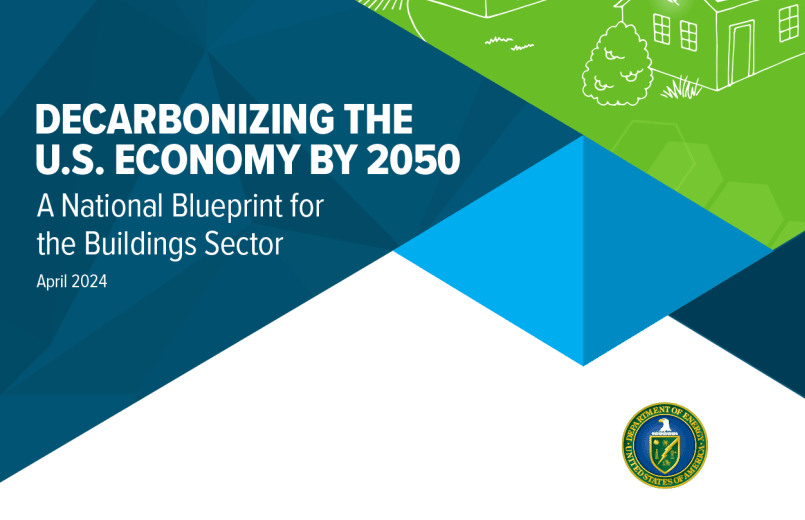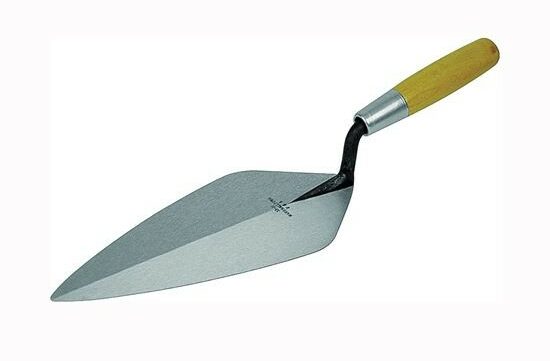Porous Asphalt- The Worst
Porous asphalt is among the worst engineering ideas of the 20th century.
Asphalt is a Great Road Surface
- Low cost
- Firm surface, with a little bit of give
- Easy to work with
- Widely available
- Easy to patch and repair
However, these same physical properties that make it a great road surface make it a poor permeable pavement system.
What is Porous Asphalt?
Porous asphalt is mixed, prepared, and poured in such a way that leaves small holes (pores) that allow water to penetrate the surface. Because it allows water to infiltrate porous asphalt has been pitched as a way to better manage the challenges of stormwater. However, when these pores collapse or clog, the system is basically overpriced normal asphalt and can no longer permit water to infiltrate.
Why Porous Asphalt is the WORST
Temperature
At slightly elevated temperatures asphalt flows. This makes it easy to work with, but also means that under summer heat it can soften and flow. This can cause pores to collapse. Temperature-driven pore collapse is only further exacerbated by vehicles compressing the surface.
Small Pores
To maintain structural integrity of the pavement the pores in porous asphalt are quite small. This has two drawbacks 1) smaller pores are significantly easier to clog then larger pores and 2) drag is a bigger problem slowing down the flow of water. Taken together these two drawbacks, demonstrate the challenges of small pores. Less material and slower water velocities mean even small amounts of grit can clog these systems necessitating more frequent maintenance.
Simply: small pores limit the higher end performance of these systems to handle stormwater.
Non-Reflective Surface
Asphalt is a dark surface that absorbs heat and sunlight. In a world where we are more conscious of a warming environment, we want fewer dark surfaces. Concrete, pavers, grass, or gravel are all significantly lighter—reflecting more heat back to the atmosphere as opposed to adding it to the environment. We should not be addressing the problem of stormwater only to create a secondary problem of heat islands. Additionally lighter colored pavement requires less overhead lighting reducing light pollution and energy usage.
Maintenance
Asphalt systems need to be patched regularly to address cracks and prevent potholes. Traditional techniques of asphalt crack repair, clog the pores of porous asphalt. Furthermore frequent milling and repaving, while possible reduces the cost-effectiveness of porous asphalt relative to peer systems.
Performance
Simply put porous asphalt performs the worst of any permeable pavement system on install, and degrades quicker than any other system. When you pay a premium for performance, and you don’t get it— you are wasting money.

Newly installed porous asphalt, not doing its job. And, this was a marketing video! (source: www.youtube.com/watch?v=I16WGau3jxE)
Take Away
While this article may not sway you towards a particular stormwater best management practice, please let it convince you to avoid using porous asphalt. Better Generation 1 options exist (pervious concrete, permeable pavers), or you can really step up your game to Generation 2 permeable pavements.

VP of Business DevelopmentAaron Fisher
Latest News
4 Features That Makes Masonry Supply Company Stand Out
A masonry supply company plays a crucial role in the success of construction projects, providing essential materials and expertise to […]

Choosing The Right Size Lintel For Your Project
Determining the correct size of a lintel is critical for the stability and longevity of your construction project. A lintel […]

Data Misses on Embodied Carbon
There is significant urgency to avoid, reduce, or even reverse the emissions of greenhouse gases (CO2e) to avoid the worst […]

4 Masonry Tools You Should Have At Home
Effective and efficient masonry work, whether for repairs or new projects, requires the right tools. At home, having a basic […]
